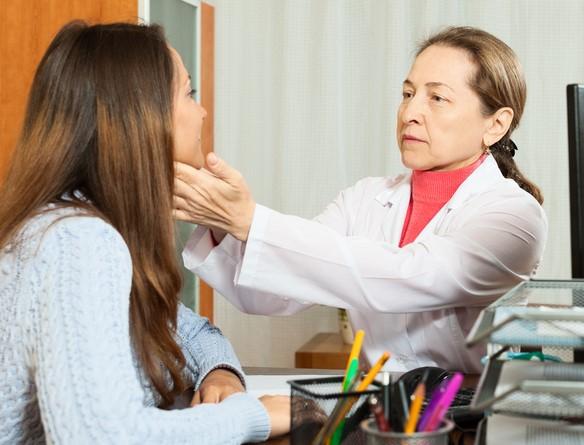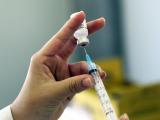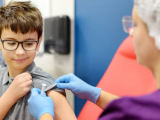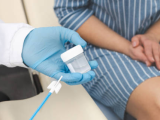In the 17 years from 1999 through 2015, the mouth and throat replaced the cervix as the most common site of cancer associated with human papillomavirus (HPV) infection in the United States, with far more oropharyngeal cancer cases in men than in women, according to the Centers for Disease Control and Prevention (CDC).
The rate of cervical cancer dropped by 1.6% per year during that period, while oropharyngeal cancer rate increased 2.8% per year among men and 0.6% per year among women, the CDC said in today's issue of Morbidity and Mortality Weekly Report (MMWR). The agency said sexual behavior may have contributed to the increase in oropharyngeal cancer.
HPV causes cervical cancer and some types of oropharyngeal, vulvar, vaginal, penile, and anal cancer, the report notes. The virus is the most common sexually transmitted infection in the United States.
To assess HPV-related cancer rates, the CDC used data from population-based cancer registries that participate in programs of the CDC the National Cancer Institute. Together the registries cover almost 98% of the US population.
Total HPV-linked cancers reached 43,000
Overall, the count of new HPV-related cancer cases swelled from 30,115 in 1999 to 43,371 in 2015, the researchers found. The 2015 number represented a rate of 12.1 cases per 100,000 people, up from 11.2 per 100,000 in 1999.
Cervical cancer was the most common type of HPV-linked cancer in 1999, with 13,125 cases, while oropharyngeal cancer cases numbered 9,375, with 74% of them in men. By 2015, oropharyngeal cancer cases outnumbered cervical cases by 18,917 to 11,788, with 82% (15,479) of the oropharyngeal cases in males.
Meanwhile, anal cancer rates increased in both men (2.7% a year) and women (0.8% a year), the CDC found. In addition, vulvar cancer rates increased 1.3% a year, while vaginal cancer decreased 0.6% per year and penile cancer rates were stable.
The CDC said the drop in cervical cancer continued a trend that began in the 1950s as a result of cancer screening. Cervical cancer declined more among Hispanics, American Indians, Alaska natives, and blacks than in other groups, but Hispanics and blacks still had higher rates than whites in 2015.
Sexual behavior as risk factor
Changing sexual behaviors may have contributed to the increase in oropharyngeal and anal cancers, the CDC said.
"Unprotected oral sex and receptive anal sex are risk factors for HPV infection," the report states. "White men have the highest number of lifetime oral sex partners and report first performing oral sex at a younger age compared with other racial/ethnic groups; these risk factors could be contributing to a higher rate of oropharyngeal SCC among white men than other racial/ethnic groups."
The agency noted that smoking is a risk factor for oropharyngeal cancers, but smoking has been declining, and other studies have pointed to HPV as the cause of the increase in these cancers.
To prevent HPV-related cancers and other ailments, HPV vaccination was added to the routine immunization program for US females in 2006 and to the program for US males in 2011. The CDC said it may be too soon to assess the impact of HPV vaccination on invasive cancers, but reductions in cervical HPV infections, genital warts, and cervical precancers have been observed.
In a press release, the CDC said studies suggest that HPV causes about 79% of all cancers in parts of the body where HPV is often found. The agency asserted that HPV vaccination could prevent 90% of US cancer cases caused by the virus, or 31,200 annually.
Vaccine uptake rises
In a separate MMWR report today, CDC researchers noted that uptake of the HPV vaccine again grew steadily from 2016 to 2017 but remains well below optimal levels.
Among adolescents 13 to 17 years old, the percentage of those receiving at least one dose of the vaccine grew from 60.4% to 65.5%, and among girls it rose from 65.1% to 68.6%. Complete coverage (two or three doses, depending on age at first dose) rose from 43.4% to 48.6% in both sexes and from 49.5% to 53.1% in girls.
The Healthy People 2020 goal for complete HPV vaccine coverage for girls and boys 13 to 15 years old is 80%. "HPV vaccination initiation has increased an average of 5.1 percentage points annually since 2013," the authors of the report noted.
See also:
Aug 24 MMWR article on HPV cancers
Related Aug 23 CDC press release
Aug 24 MMWR report on teen vaccination coverage





















